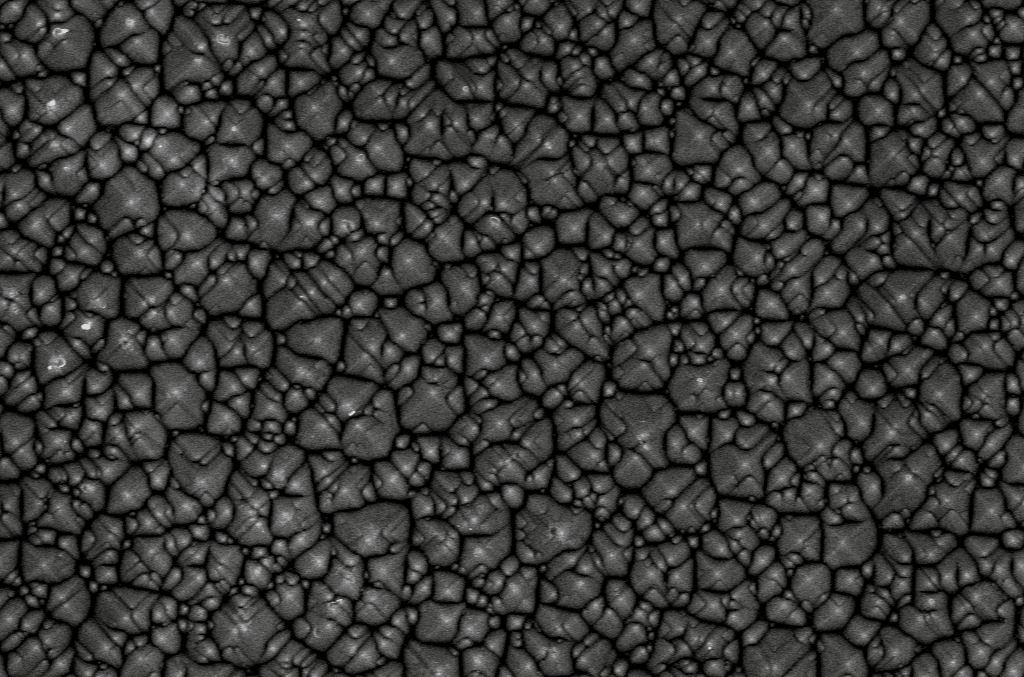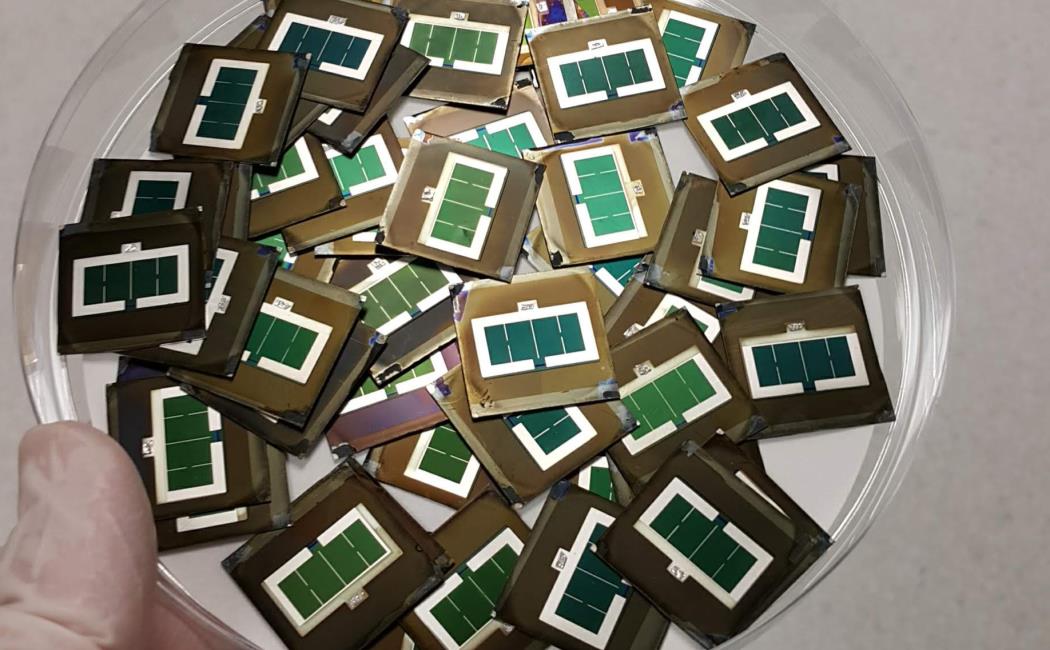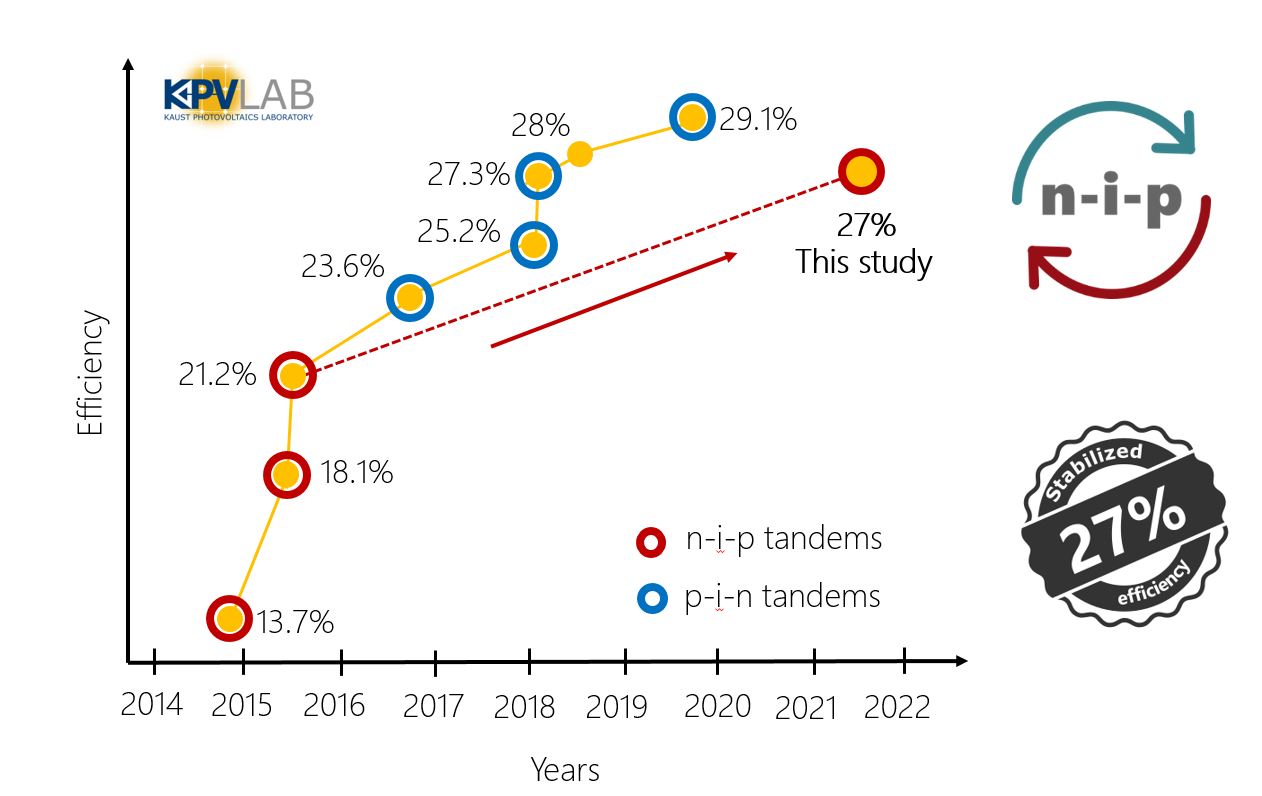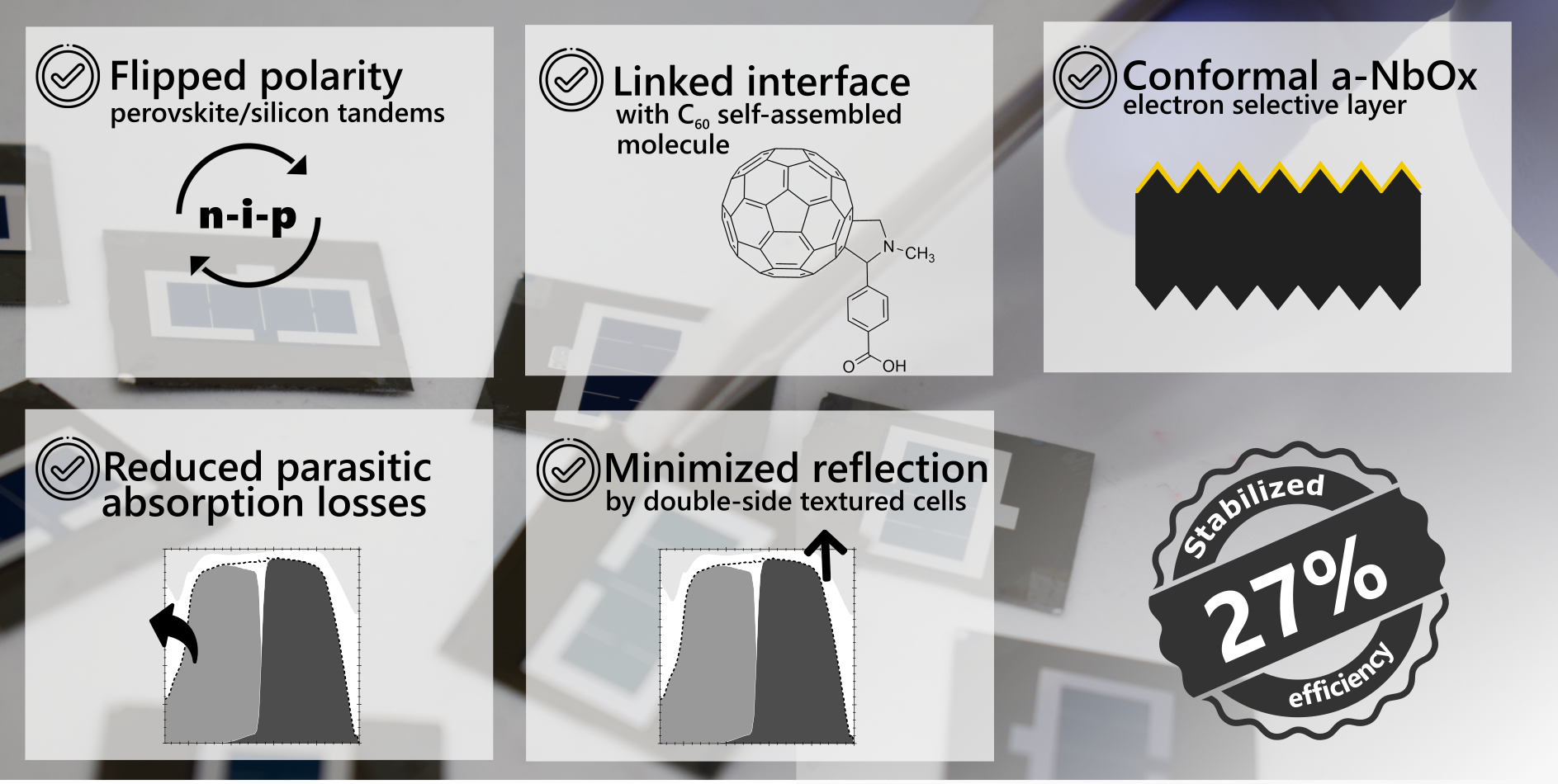


01 July, 2021
Tandem solar cells made from a combination of silicon heterojunction (SHJ) bottom cells and a perovskite top cell with a n-i-p layout reached a new milestone for efficiency. Our lab, in collaboration with University of Toronto, the National University of Singapore, and the National Technical University of Athens has built a monolithic tandem solar cell with a power conversion efficiency of 27%, beating out the previous best-reported value of 22% in the same configuration.
Perovskite/silicon tandem solar cells can be illuminated either from the p-type contact side or from n-type contact side based on the fabrication steps. While the first one is called n-i-p, the latter one is called p-i-n configuration. Initial examples of such devices were in a n-i-p configuration, but these were limited by a low quantum efficiency, mostly due to high parasitic absorption in the hole-collecting contact stacks at the front (employing materials such the archetypal spiro-OMeTAD), and non-ideal optical design of the bottom cells. Then, global tandem research refocused, therefore, onto p-i-n configuration. However, as a result, perovskite/silicon tandem research no longer stood to benefit from the rapid pace of advancements in single-junction n-i-p perovskite solar cells (which is the record technology with PCEs >25% nowadays).

We do this by developing novel electron and hole selective contacts, which combine a high broadband transparency with efficient charge extraction. For this, they develop efficient amorphous niobium oxide (a-NbOx) electron selective layers exhibiting high conformality on macroscale textured silicon substrates: the texture is needed to minimize light reflection. Further, they link this contact with the perovskite layer with a C60 self-assembled molecular monolayer.
On the sunward side, we overcome the high parasitic absorption (the light absorbed but converted to heat, not electricity) and fast degradation challenges of classical contacts by developing conformal, transparent, and efficient hole selective layers and interlayers.

Our agenda-setting results enable a new tandem device platform. This new device platform allows for translating the achievements of n-i-p single-junction solar cells into the context of tandems. We expect rapid progress to be achieved in the field of perovskite/silicon tandems in the n-i-p configuration thanks to these advancements.
Our results are described in “Ligand-bridged charge extraction and enhanced quantum efficiency enable efficient n-i-p perovskite/silicon tandem solar cells” which was recently published in Energy & Environmental Science with open access option.